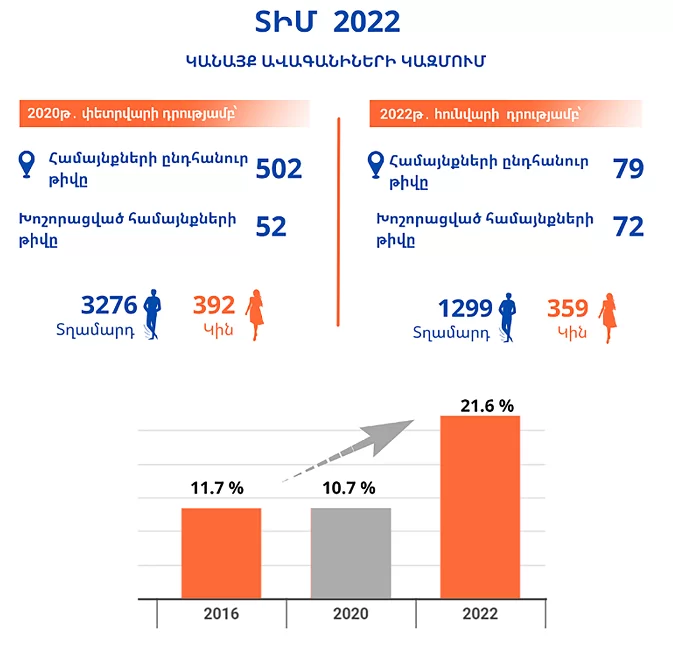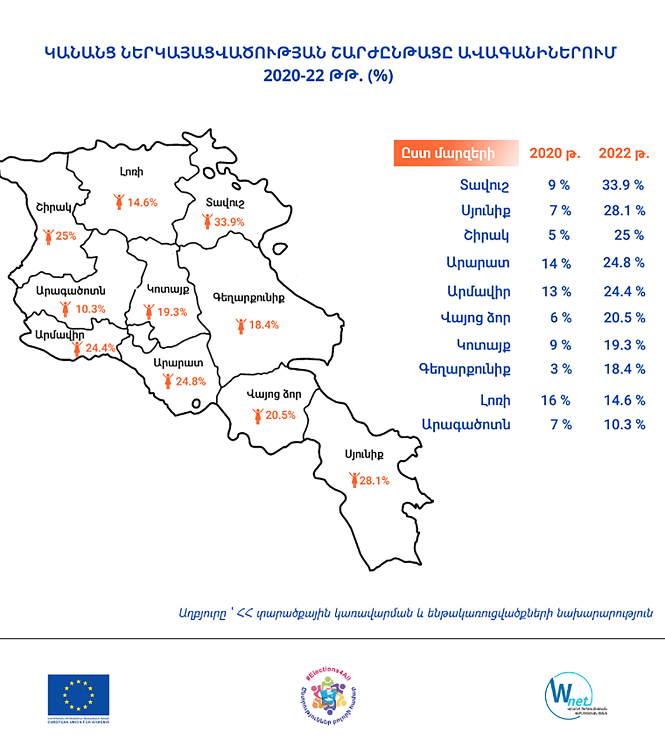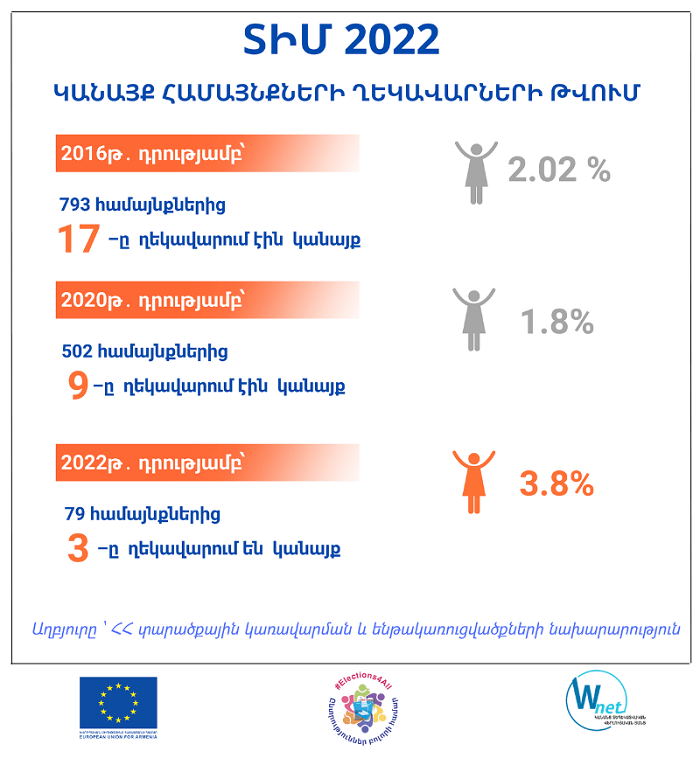
There are currently 79 communities in Armenia, 72 of which are enlarged, according to data provided to WomenNet.am by the RA Ministry of Territorial Administration and Infrastructure as of January 2022.
It should be noted that at the beginning of the community enlargement there were 915 communities in Armenia, and after the first large-scale enlargement in 2016, there were 502 communities left in the republic, 52 of which were enlarged. The next large-scale enlargement took place in 2021, when proportional local elections were held on October 17, November 14 and December 5 in 45 enlarged communities. Thus, only on December 5, as a result of the elections held in 36 clusters of 9 regions of the country, 441 communities were united.
In fact, due to the quota, today there are no communities elected by proportional representation, in which women are not represented in the councils. The exception is the Aparan community of Aragatsotn region, where there are no women among the 21 members of the Council of Elders; several other communities, where there are no women in separate factions. WomenNet.am covered these facts in more detail in one of its previous publications.

After the 2021 local elections, only three out of 79 communities in Armenia (3.8%) are headed by women: the enlarged communities of Vagharshapat in Armavir, the enlarged communities of Amasia in Shirak, and the non-enlarged community of Verin Dvin in the Ararat region, which is an Assyrian village. Lyudmila Petrova has been leading the community since 2014.
For comparison, before that 9 out of 502 communities in Armenia were headed by women, which was 1.8%. In other words, a certain increase in terms of interest rates was registered in 2020. compared to today’s 3.8% is far from satisfactory.

Considering the trend of women’s representation in local self-government over the last ten years, it can be stated that a significant change has been registered only after the last elections due to the application of quotas, and only in terms of the percentage increase of women in councils. The problem of under-representation of women among community leaders is not regulated through quotas, the solution is largely in the field of parties, as their party lists are rarely headed by women.

Full text in Armenian